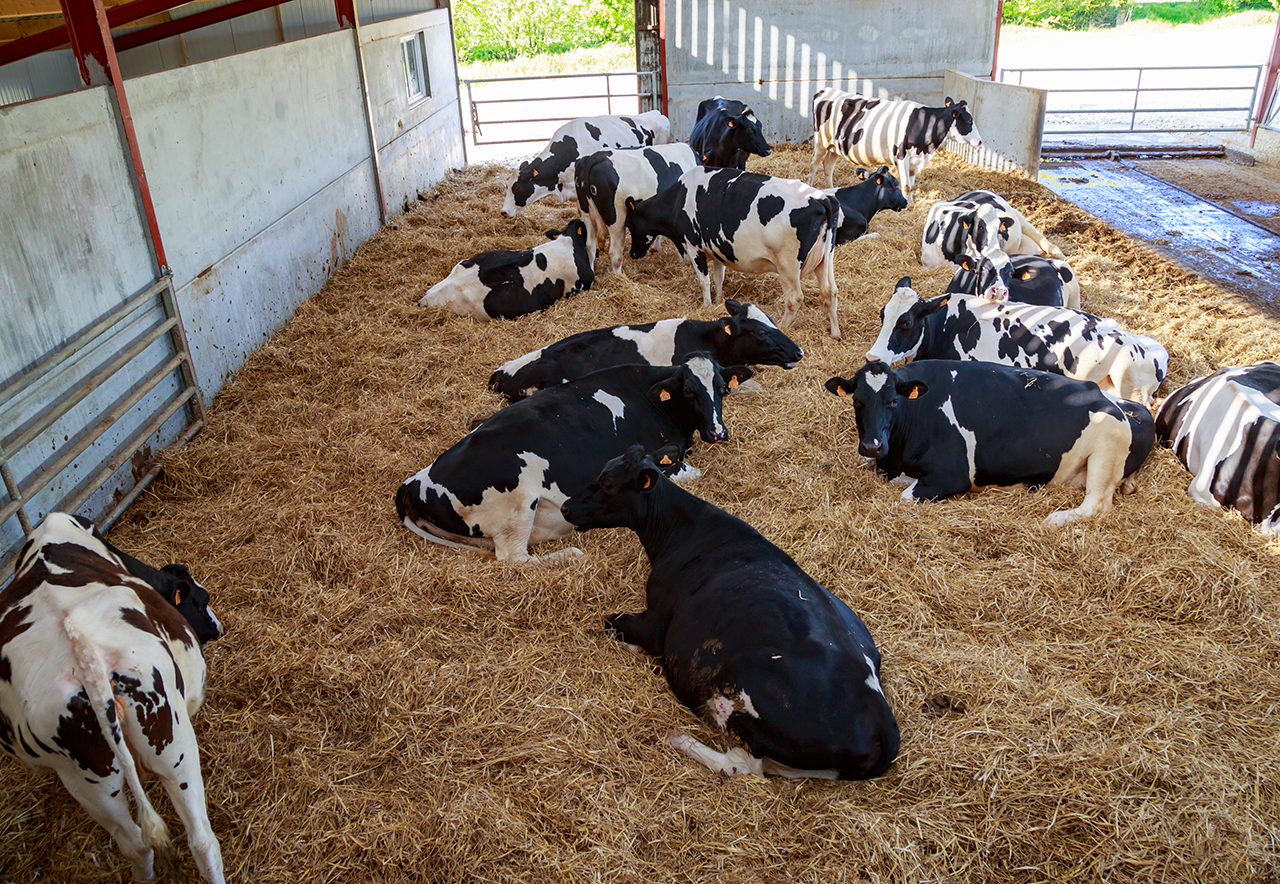
Ketosis in dairy cows is metabolic condition that is always mentioned during calving. Frequently described as the main cause of problems after calving.
Ketosis, or acetonemia, is not really a “disease” – It is not infectious and does not come with easily recognizable signs like fever or swelling. It is a change in metabolism, most of the times, it is not even being recognized. This however does not mean it has no impact on the cow's health and performance.
Around calving, the metabolism of a dairy cow will change considerably. During pregnancy the energy demand is constant. With labour however milk production draws energy massively. This energy doesn’t come from feed alone, so the body’s energy reserves (fat) are mobilized. The more fat is mobilized, the more likely it is that that it can’t be used properly and the so-called “Ketone Bodies” are being formed in the liver. These ketone bodies are a kind of energy-reserve and can be used as a fuel. They are, however, also toxic to some cells when their concentration is too high. This may lead to an altered behaviour with less activity and feed intake, because nervous cells are affected; and animals are at a higher risk for infections, because the ketone bodies are impacting the immune system.
Ketosis is often noticed in cows after calving. For instance, they may seem “slow”, not produce as expected, develope conditions such as mastitis, metritis or displaced abomasum. In the end, it is a loss of production and a higher risk of being culled that makes ketosis a costly disease, even if in itself it may often be overlooked.

Various strategies have been developed to detect and treat ketosis: Small hand-held devices to measure the concentration of ketone-bodies in blood, strips for a quick assessment in urine or milk. Strategies to provide substances like propylene-glycol to calved cows have been advocated and every dairy nutritionist will have his or her own strategy to prevent ketosis. But, whatever one does to detect and treat it, it rarely prevents the condition. It is absolutely necessary to check cows after calving regularly and look for signs of ketosis; but once ketosis is detected it is already there, it is already too late! The question therefore is how to prevent ketosis.
“Fat” cows are more prone to develop the condition, just because they have more fat that can get mobilized. The cows that had a rather long lactation and gained body condition while producing relatively little milk at the end of it are more likely to get fat. If in addition the cows the cows that did not eat as much as possible before calving, their energy deficit after calving will be more severe, making ketosis even more likely.
We come here to the importance of using data in prevention: Checking milk recordings, herd data and individual cows’ performance is the most important and necessary step to identify those cows that will need special attention to prevent ketosis. Then, there’s a lot a farmer can do: Optimal feeding regime, preventive treatment during the dry period or supportive nutrition in the transition period. Ketosis will never be prevented a 100% - But its occurrence can be decreased and its detrimental consequences reduced.